The limit is fuzzy, and often the manufacturers suggest 80% of the full charged voltage, which for LiPo batteries (3.7 V) equals to about 3 V.
But they also say that increasing the limit prolongs the life of the battery: so you have to choose if you need more long life or long cycles.
Just to give a reference: this is the datasheet of a LiPo battery charger/discharger for energy harvesting, and you can set it to disconnect the battery either at 3.2 or 2.7 V.
Another reference is Battery University:
Similar to a mechanical device that wears out faster with heavy use, so also does the depth of discharge (DoD) determine the cycle count. The smaller the depth of discharge, the longer the battery will last.
Depth of discharge Discharge cycles
100% DoD 500
50% DoD 1500
25% DoD 2500
10% DoD 4700
Also the upper limit (4 to 4.2 V) is variable, and it also affects the battery life.
The voltage level to which the cells are charged also plays a role in extending longevity. For safety reasons, most lithium-ion cannot exceed 4.20V/cell. While a higher voltage would boost capacity, over-voltage shortens service life. Figure 4 demonstrates the increased capacity but shorter cycle life if Li-ion were allowed to exceed the 4.20V/cell limit. At 4.35V, the capacity would increase by 10 to 15 percent, but the cycle count would be cut in half. More critical than the extra capacity is reduced safety, which would be the results of a higher charge voltage.
Chargers for cellular phones, laptops and digital cameras bring the Li-ion battery to 4.20V/cell. This allows maximum runtime, and the consumer wants nothing less than optimal use of the battery capacity. The industry, on the other hand, is more concerned with longevity and prefers lower voltage thresholds.
We have limited information by how much lower charge voltages prolong battery life; this depends on many conditions, as we have learned. What we do know, however, is the capacities. At a charge to 4.10V/cell, the battery holds a capacity that is about 10 percent less than going all the way to 4.20V/cell. In terms of optimal longevity, a charge voltage limit of 3.92V/cell works best but the capacity would be low. Besides selecting the best-suited voltage thresholds, it is also important that the battery does not stay in the high-voltage stage for a long time and is allowed to drop after full charge has been reached.
Here it says:
A battery on a hybrid car is seldom fully charged or discharged; most operate between 20 to 80 percent state-of-charge. This is the most effective working bandwidth of a battery; it also delivers the longest service life.

